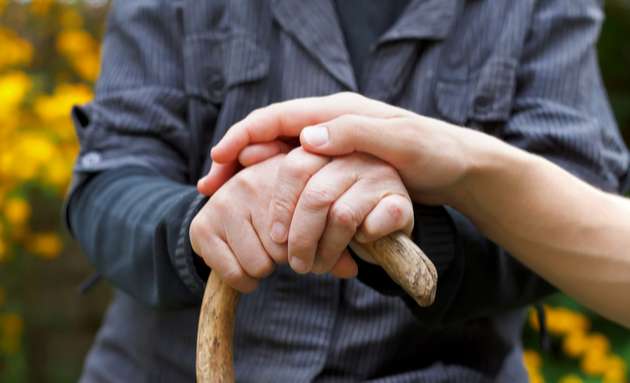How To Manage Sore Muscles And Joint Pain?

Sore muscles are common when you exercise after a long inactive phase. It’s not out of the ordinary to experience some aches and discomfort when you undertake sudden physical chores like lifting heavy items, participate in sports activities such as a marathon event, hiking, a game of tennis, or football with friends. Even athletes experience some soreness if they overuse or strain their muscles during exercise.
Other factors like tension, stress, minor injuries after a fall, as well as fever and illness, also lead to muscle pains and aches that can last for a few days or weeks.
It is crucial that you manage this pain right from its onset so as to avoid slipping into the cycle of a lack of exercise, increasing discomfort, chronic pain, and frustration.
So How Do You Manage Sore Muscles and Joint Pains?
It’s important to note that the treatment for muscle soreness or joint pain is often linked to the cause. Identifying the reason for pain helps to determine if you can treat it on your own, or if you need to see a doctor.
-
Physical Exertion
If muscle and joint pain is a consequence of a rare physical activity or sporting event, chances are that the pain will subside within a week. If you find the pain unbearable initially, you could take an over-the-counter medication to manage the pain. However, it is not recommended to take these medicines too often as they can have a range of side effects. -
Osteoarthritis, and Other Conditions
[caption id="attachment_12212" align="alignnone" width="630"] Osteoarthritis treatment at Medanta[/caption]
Osteoarthritis treatment at Medanta[/caption]
If you are above 50 or 60, you may be susceptible to inflammation in the joints, or deformity in your hands owing to damage to your cartilage. This is more commonly known as osteoarthritis. Aches and joint pains are also symptoms of loss of bone density (osteoporosis), and diseases such as Type 1 diabetes, rheumatoid arthritis, or multiple sclerosis.
Although these conditions may affect your normal activities and limit some of them, they can still be managed and treated with timely diagnosis, medication, and physical therapy, leaving you feeling fit and energised.
Depending upon the severity of your condition, you may be prescribed painkillers or non-steroidal anti-inflammatory drugs or gels, steroid injections, physiotherapy or orthotics such as insoles and splints, or surgery. If you are obese, you may be advised to lose weight. -
Chronic Pain Due to Inflammation
Inflammation in the joints, muscle, tendons and tissues can sometimes cause widespread pain that is accompanied by mental and physical fatigue. This generally worsens after a certain stressful activity or physical exertion and does not ease even after rest or sleep. Some of these conditions include chronic fatigue syndrome (CFS), fibromyalgia, dystonia, myofascial pain syndrome, polymyalgia rheumatica (usually seen in people aged over 65), or polymyositis.
While the reasons for a majority of these medical conditions are unclear and still being studied, they point to inflammation as a common factor and rarely have a permanent cure. However, the good news is that regulating your diet, taking recommended medication and supplements, as well as regular physical therapy, may ease the severity of pain to an extent. -
Pain Caused by Medication
Medication to control cholesterol problems is sometimes known to cause muscle pain, weakness, and stiffness in the body. It is advisable to keep your doctor updated about any discomfort or muscle and joint pains so he/she can determine if they are caused by the side effects of your cholesterol medication.
Are There Alternate Ways to Treat Muscle and Joint Pains?
The discomfort caused by your joint pains and muscle soreness can be annoying or even debilitating. In addition to the medical recommendations provided by your doctor, try out these alternative methods to relieve your pain.
-
Epsom Salt Soak
Epsom salts are high in magnesium and sulphates and are known to relax tense muscles by lowering inflammation. Alternatively, hot compresses or heat gel application followed by cold compresses could help with reducing fluid retention by increasing the blood flow to the affected area. -
Exercise

Regular, low-impact exercises such as walking, stretching, or yoga could help improve your blood circulation, effectively reducing pain. -
Diet and Supplements
Frequent consumption of processed foods and ready meals contributes to an increase in inflammation in the body due to refined carbohydrates, high salt and sugar content. Cutting down on these, and including natural sources of antioxidants such as fresh fruits, vegetables and greens in your diet, some herbal teas like green tea, as well as dark chocolate, will allow your body to counteract the damage and reduce the risk of age-related strains. Spices such as turmeric (as a powder in milk), basil, chilli peppers, ginger, cinnamon, garlic or thyme, are also known to contain pain and inflammation-relieving compounds.
Additionally, the inclusion of the following as food or as supplements can significantly help your body recover faster from a workout and decrease the symptoms of joint and muscle pain.- Fish oils, nuts and seeds like flax seeds that are naturally high in omega-3 fatty acids.
- Calcium and vitamin D supplements.
- Proteins found in meat and fish and eggshell membranes, or collagen supplements.
- Proteolytic enzymes such as bromelain (extracted from the core of pineapples).
- Glucosamine, and SAMe (butanedisulfonate) supplements.
Whatever supplements or treatment you choose, make sure you keep your doctor informed so he/she can check that they do not interfere with your underlying health conditions or medication.






